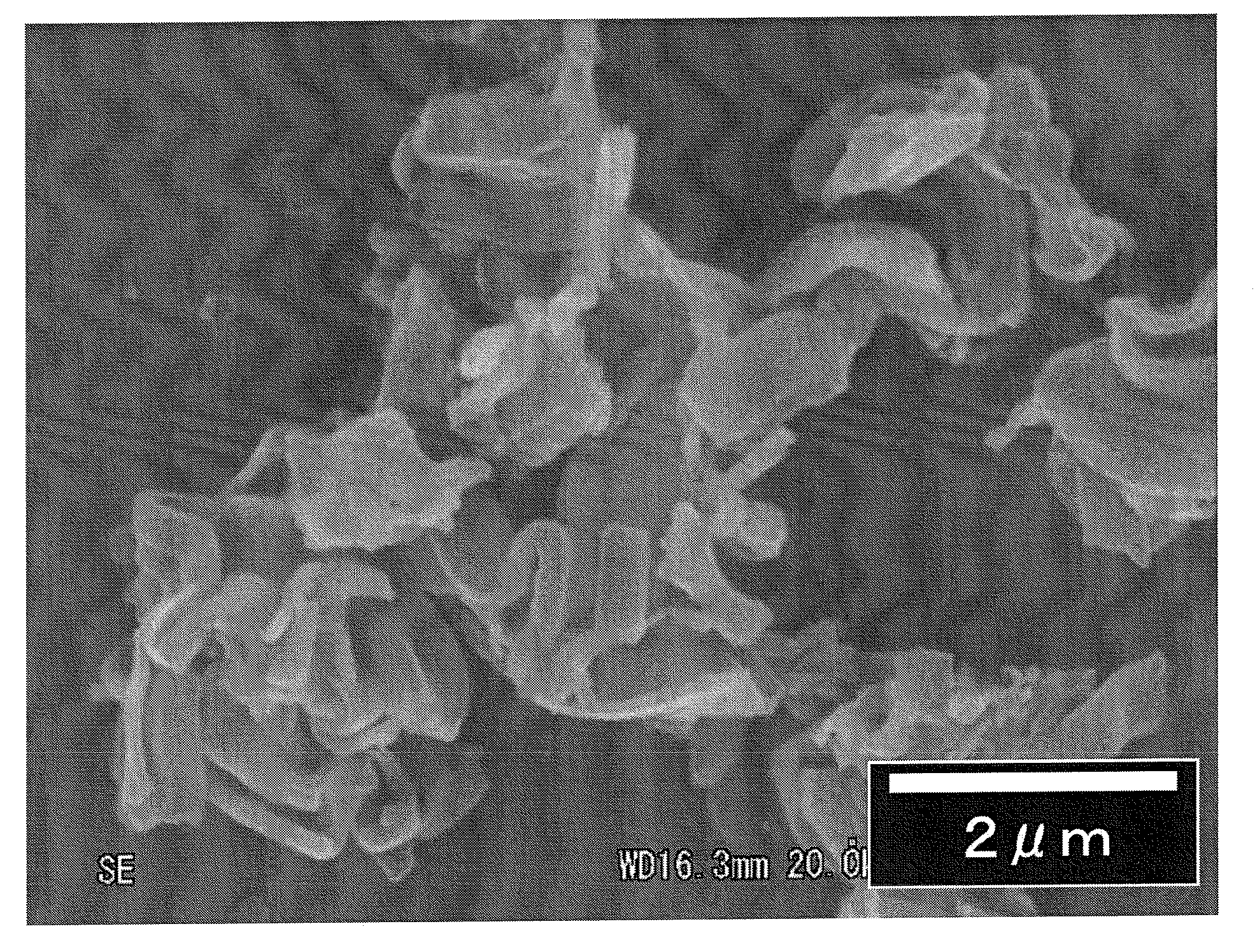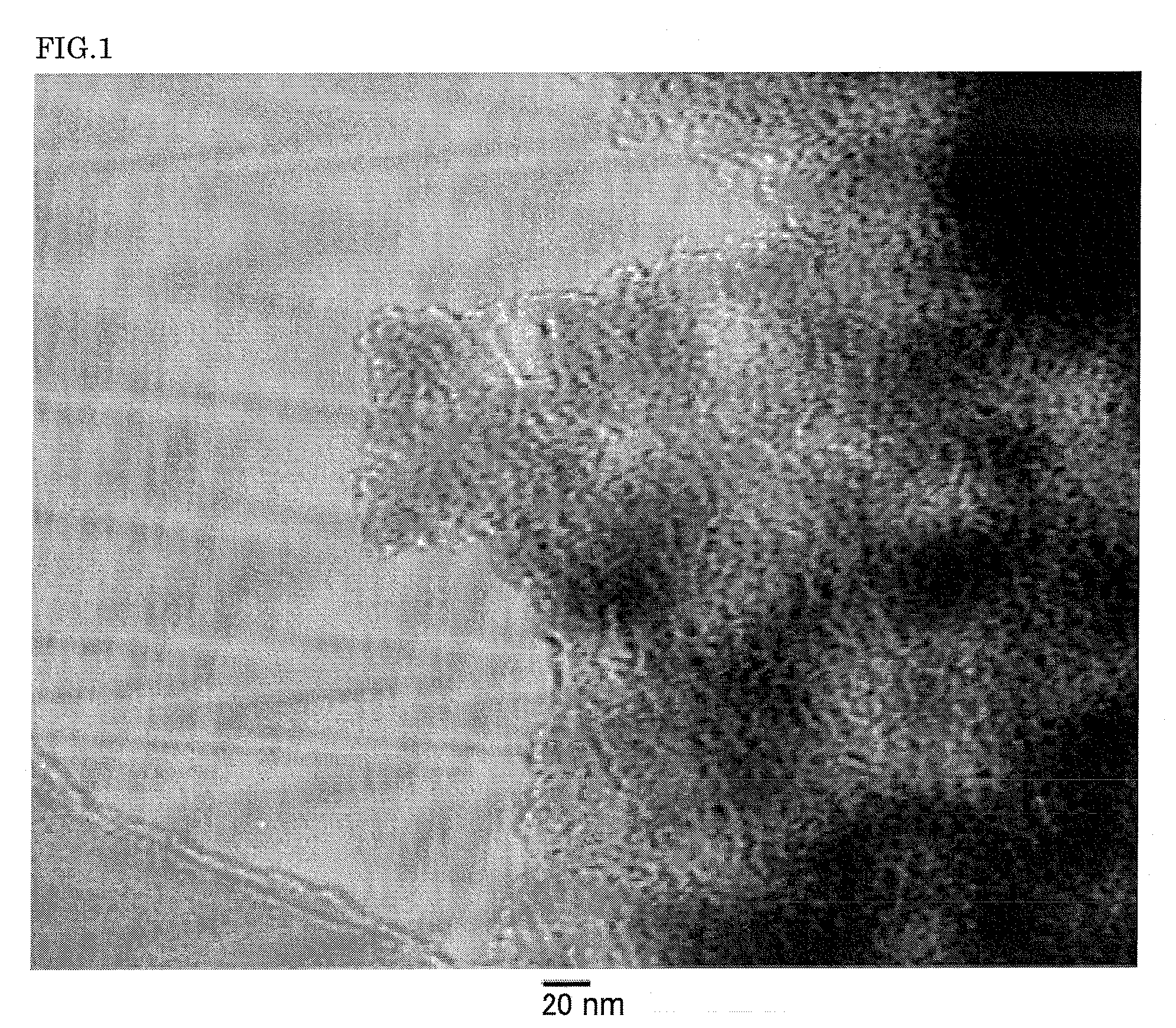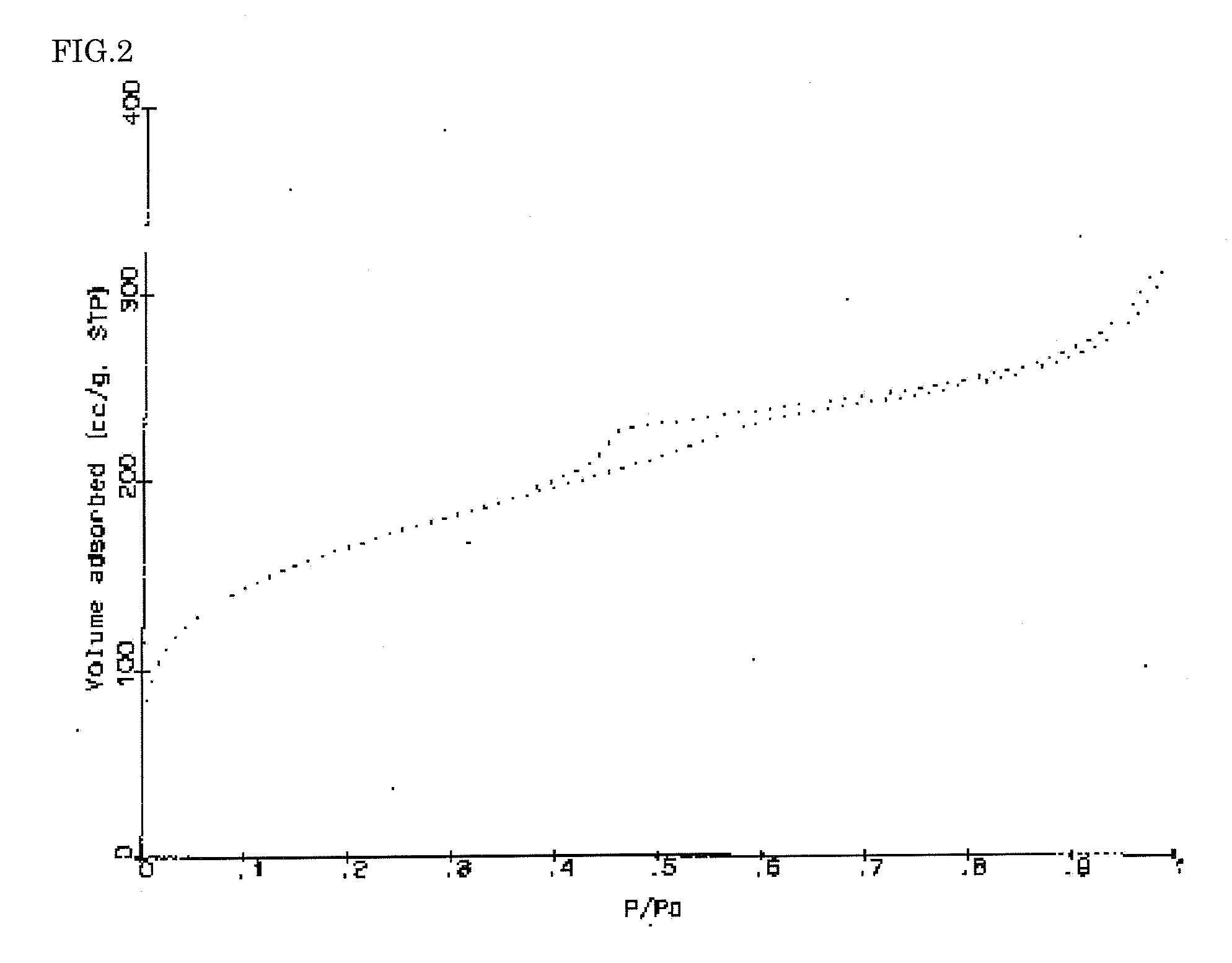Mesoporous Silica And Production Method Thereof
a technology of mesoporous silica and production method, which is applied in the direction of molecular-sieve silica-polymorphs, silicon oxides, silicon compounds, etc., can solve the problems of limited application variation as functional materials, difficult hydrolysis of alkoxy groups, and inability to take full advantage, so as to achieve the extension of the application variation of mesoporous silica as functional materials and high structural order
- Summary
- Abstract
- Description
- Claims
- Application Information
AI Technical Summary
Benefits of technology
Problems solved by technology
Method used
Image
Examples
synthesis example 1
[0080]To 150 mL of acetonitrile, 20.8 g (0.1 mol) of tetraethoxysilane and 24.9 g (0.4 mol) of ethylene glycol were added, and then 1.8 g of strong acid ion exchange resin (DowEx 50W-X8, a product of Dow Chemical Company) was also added as a solid catalyst. Then the mixture was mixed with stirring at room temperature. The reaction solution, which was initially separated into two layers, became a homogeneous solution after about 1 hour. The stirring of the mixture was continued for 5 days, and then the solid catalyst was separated by filtration. Acetonitrile was distilled away under reduced pressure, and 39 g of transparent viscous liquid was obtained. Based on the results of NMR analysis, the product was confirmed to be the desired tetra(2-hydroxyethoxy)silane (yield: 72.5%).
[0081]Production of Mesoporous Silica
[0082]The present inventors prepared a water-soluble silicate monomer according to the above-described synthesis example and tried the preparation of a mesoporous silica with...
example 1
[0083]The surfactant POE (20 mol) oleyl ether (0.4 g) was added to ion-exchanged water (3.6 g) and stirred until a homogeneous solution was obtained, and then tetra(hydroxyethoxy)silane (1.0 g) was added and stirred for 1 more hour. The solution showed a transparent uniform appearance. The solution was allowed to stand at 25° C. for 8 hours; then slight turbidity was generated throughout the aqueous solution. After still standing for an additional 16 hours, the entirety became cloudy and became a gel. This gel was lyophilized to remove water, ethanol was added and allowed to stand at 37° C. overnight, and the ethanol solution containing the surfactant was removed. The remaining white powder was dried with an evaporator, and a silica powder was obtained.
[0084]The silica powder obtained in Example 1 was observed with a transmission electron microscope. The obtained micrograph is shown in FIG. 1. As seen in FIG. 1, a wave-like pattern was observed at the center, and the presence of por...
example 9
[0092]The surfactant POE (10 mol) phytosterol ether (0.8 g) was added to ion-exchanged water (3.2 g), and the mixture was stirred until it became homogeneous. This surfactant solution was confirmed to be a chiral nematic liquid crystal phase by the microscopic observation etc. To this liquid crystal, tetra(hydroxyethoxy)silane (1.0 g) was added and stirred for 10 minutes. The solution showed a transparent uniform appearance. The solution was allowed to stand at 25° C. for 3 hours; then the entire solution became cloudy. After the additional still standing for 17 hours, the entire solution became a gel by retaining white cloudiness. This gel was lyophilized to remove water, ethanol was added and allowed to stand at 37° C. overnight, and the ethanol solution containing the surfactant was removed. The remaining white powder was dried with an evaporator, and a silica powder was obtained.
[0093]The silica powder obtained in Example 9 was observed with a transmission electron microscope, a...
PUM
| Property | Measurement | Unit |
|---|---|---|
| Length | aaaaa | aaaaa |
| Substance count | aaaaa | aaaaa |
| Substance count | aaaaa | aaaaa |
Abstract
Description
Claims
Application Information
 Login to View More
Login to View More - R&D
- Intellectual Property
- Life Sciences
- Materials
- Tech Scout
- Unparalleled Data Quality
- Higher Quality Content
- 60% Fewer Hallucinations
Browse by: Latest US Patents, China's latest patents, Technical Efficacy Thesaurus, Application Domain, Technology Topic, Popular Technical Reports.
© 2025 PatSnap. All rights reserved.Legal|Privacy policy|Modern Slavery Act Transparency Statement|Sitemap|About US| Contact US: help@patsnap.com



